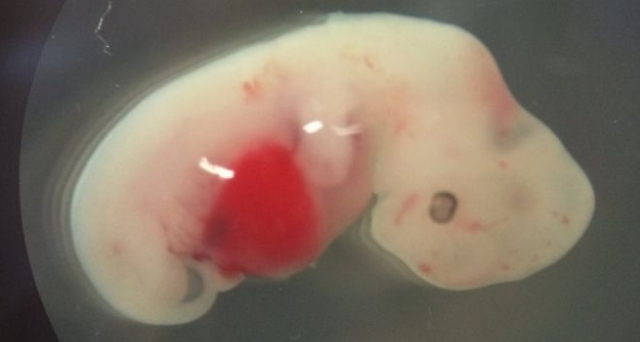Growing human organs inside animals has long been a dream of scientists who want to provide hearts, lungs and kidneys that are transplantable. On Thursday, this idea moved closer to reality as researchers used stem cell technologies to generate human cells and tissues in the embryos of pigs and cattle.
But despite this small success, integrating human cells into animal species is very difficult, so the path to developing human organs is a long one yet, said Dr. Jun Wu, author on the research and a staff scientist in the gene expression laboratory at the Salk Institute.
“Species evolve independently, and many factors dictating the developmental programs might have diverged, which makes it difficult to blend cells from one species to a developing embryo from another,” he said. “The larger the evolutionary distance, the more difficult for them to mix.”
Senior author Juan Carlos Izpisua Belmonte, a professor in Salk’s gene expression laboratory, put it in simpler terms,
To try to imitate nature is not that easy.
The project began in an attempt to prove that science could grow an animal’s organ cells within a different species, CNN reports. This is called a chimera – specifically, an interspecies chimera, or an organism containing cells from more than one species.
The researchers began with rats and mice, two closely-related species. They made a mouse embryo without a pancreas, then inserted rat stem cells that contained a gene for the pancreas. The stem cells developed into a rat pancreas within the mouse embryo that turned into a full-grown mouse.
They then turned to humans. They generated pluripotent stem cells and inserted them in pig embryos. Next, they implanted the embryos into sows and stopped the experiment at four weeks.
They found that human cells within some of the embryos had begun to specialize and turn into the beginnings of tissue. However, the success rate in the pigs was much lower than the rat-mouse chimeras.
Wu warned that this research is still in its early stages and there are many challenges ahead. This does remain the first case in which human stem cells have grown inside another species, so it is a small, but significant step forward.
The study was published in the journal Cell.
























